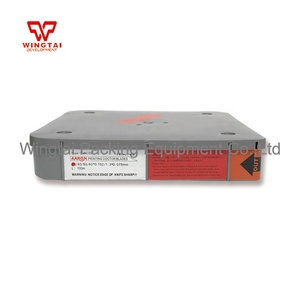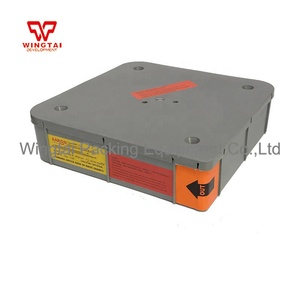
All categories
Featured selections
Trade Assurance
Buyer Central
Help Center
Get the app
Become a supplier

(2680 products available)

























A blade carrier is an important component of a gas turbine engine. It is designed to hold and secure the blades of the turbine. There are different kinds of blade carriers, each of which has its own unique characteristics and advantages. They are as follows:
Blade carriers for gas turbine engines:
Gas turbine engines use several kinds of blade carriers. The axial flow gas turbine engine has multiple blade carriers grouped in stages along the engine shaft. These blade carriers secure compressor blades in the front and turbine blades in the back. They work together to move air and boost efficiency. The radial flow gas turbine engine uses a radial blade carrier to organize blades around the engine shaft. This design is great for smaller engines that need quick acceleration.
Blade carriers for wind turbines:
Wind turbines use horizontal axis wind turbines (HAWT) and vertical axis wind turbines (VAWT), each with different blade carriers. HAWT organizes blades around a horizontal axis to catch wind and spin the turbine. VAWT has blades positioned vertically against the wind direction. Both types of blade carriers are designed to capture wind energy efficiently and convert it into electrical power. They are designed to maximize energy capture at different wind speeds and directions.
Blade carriers for industrial fans:
Industrial fans use several kinds of blade carriers to improve air circulation in factories and large spaces. Centrifugal fans use a blade carrier that holds curved blades angled away from the center. This design moves air efficiently for cooling and ventilation. Axial fans have a simpler blade carrier that keeps blades aligned along the axis. This structure moves more air for less resistance. Both types of blade carriers are designed to handle heavy-duty applications.
Various factors influence the design of a blade carrier, including the type of machine it is meant for, the number of blades, the size and weight of the blades, and any specific operational requirements. A well-designed blade carrier enhances the efficiency of the machine, ensures the longevity of the blades, and promotes safety during operation.
Material selection
The material chosen for blade carriers has to be strong but lightweight. It is often made from high-grade steel or aluminum alloys. These materials can withstand the stress of carrying heavy or numerous blades while being easy to handle and install.
Modular design
Blade carriers are sometimes designed to be modular so that different types of blades can be used. This means that one can change just the part that holds the blade without having to get rid of the entire carrier. Such a design allows for flexibility and cost-effectiveness in maintaining and using blade carriers.
Ergonomics
Blade carriers need to be user-friendly to ensure safety. Their handles, grips, or hooks should be easy to hold and use. This prevents accidents when people are moving around with sharp or heavy blades. It is what is meant by ergonomic design; it makes things safer and easier for those who have to work with blade carriers regularly.
Compact storage
When not in use, blade carriers should be able to store away without taking up too much space. This is why designers make them foldable or detachable so that they can be kept safely without interfering with other activities or becoming a safety hazard due to their size.
Durability
Blade carriers must last a long time because they often have to endure rough treatment and extreme weather conditions. The finishes applied to them protect against corrosion, rusting, and physical wear and tear over time. Such protective measures ensure that the blade carrier remains in good condition longer, thus offering better value for money spent on it.
Blade carriers are employed in many industries and fields that require precise and effective cutting. One of the major applications is textile manufacturing. Textile blade carriers hold the blades of oscillating knives, enabling the cutting of fabrics into desired patterns. These are used in making clothes, carpets, upholstery, and other textile products. In the leather industry, leather blade carriers are used to cut leather hides into specific shapes for shoes, bags, belts, and other leather goods.
In woodworking, wood blade carriers for saws and routers are used to cut wood into furniture, cabinets, and doors. The food processing industry also utilizes blade carriers, for example, in the meat industry. Meat slicer blade carriers hold sharp blades to slice meat into different cuts. Food processors use different types of blade carriers to chop, slice, and dice food into various preparations.
In construction, blade carriers are used in masonry saws to cut bricks and tiles. Floor scrapers use blade carriers to remove old flooring. In the metalworking industry, metal cutting saws and shears use blade carriers to shape and trim metal parts for tools and machines. In the medical field, precision is critical, so blade carriers are used in surgical scalpels to ensure accurate cuts during operations. Blade carriers are also used in laboratory microtomes to slice specimens for detailed examination under a microscope.
Blade carriers find applications in many fields that require effective cutting. These devices enable precision cuts in different materials, thus playing an important role in production and construction processes across various industries. In the automotive industry, blade carriers are used in the assembly line to cut materials for seats, dashboards, and other components. In the aerospace sector, aircraft manufacturers use blade carriers to cut composite materials used in airplane wings and fuselage parts.
The blades are also used in the insulation and packaging industries. Insulation cutters use them to produce thermal insulation materials for buildings and appliances. Packaging machinery is equipped with blade carriers to cut films, papers, and foams used for product packaging. In the electronics sector, smartphone manufacturers use blade carriers to cut materials for phones' interior and exterior parts. Battery manufacturers employ blade carriers to shape materials used in batteries for different devices.
Application Requirements:
When selecting a blade carrier, users should consider what it will be used for. Different types are better for some jobs than others. For example, if users need to store and transport blades safely over long distances, they should look for features like robust construction, shock absorption, and secure fastening systems. On the other hand, if quick access and convenience are more important, they should prioritize carriers with easy-opening mechanisms and organized compartments.
Blade Compatibility:
It is important for users to ensure that the blade carrier is compatible with the specific blades they intend to store. Different carriers are designed to hold various blade sizes and types, so users should choose one that matches their needs. This compatibility ensures that the blades fit securely within the carrier, reducing the risk of damage or accidents.
Construction Material:
Users should choose blade carriers made from durable materials that can withstand regular use and provide adequate protection for the stored blades. Common materials used in blade carriers include high-quality plastics, metal, or a combination of both. For instance, hard plastic or metal carriers are well-suited for rugged environments where carriers may be subjected to rough handling or extreme conditions. These materials offer enhanced strength and resilience, ensuring the carriers can withstand the demands of such environments.
Size and Portability:
Users should consider the size and weight of the blade carrier, especially if it needs to be transported frequently. A portable carrier is easier to carry around and store when not in use. Additionally, users should look for features that enhance the carrier's portability, such as comfortable handles or adjustable shoulder straps that allow for convenient transportation of the carrier.
Safety Features:
The blade carrier should have safety features that prevent accidental blade exposure or injuries. Look for carriers with secure locking mechanisms, sturdy latches, and reliable zippers to keep the blades safely enclosed. Carriers with inner blade sleeves or dividers provide extra protection by preventing blades from coming into contact with each other.
Cost:
Business buyers should consider the cost of the blade carrier. They should ensure it is worth the money and meets the budget.
Q1: What is a blade carrier?
A1: A blade carrier is a component of a helicopter that connects the main rotor blades to the rotor hub.
Q2: What is the purpose of a blade carrier?
A2: The blade carrier transfers loads and aerodynamic forces from the rotor blades to the rotor hub, allowing for smooth rotation and articulation of the blades during flight.
Q3: What are the key features to consider when selecting a blade carrier?
A3: Important features include material selection, strength and durability, weight, fatigue resistance, precision engineering, compatibility, and maintenance considerations.
Q4: Which materials are commonly used in blade carriers?
A4: Blade carriers are typically made from advanced materials such as titanium alloys, composite materials, or high-strength steel to withstand the demanding loads and stresses experienced during helicopter operation.
Q5: How does the design of a blade carrier contribute to helicopter safety?
A5: The design of the blade carrier ensures structural integrity, load distribution, and proper blade articulation, all of which are critical for maintaining helicopter safety and performance during flight.